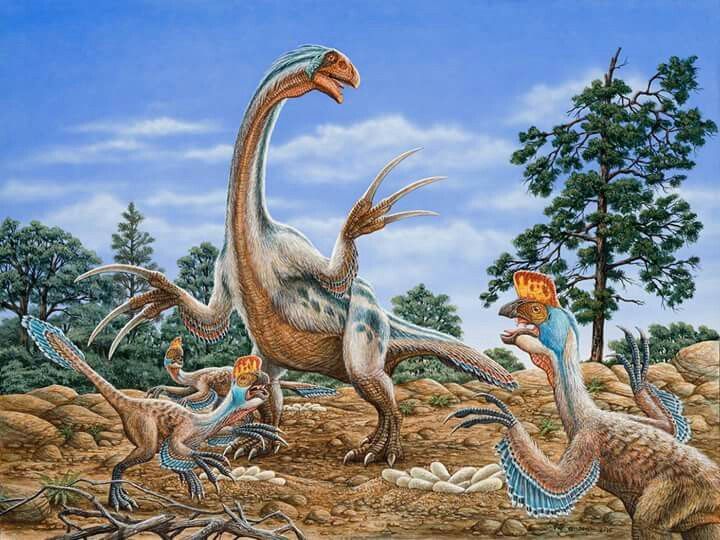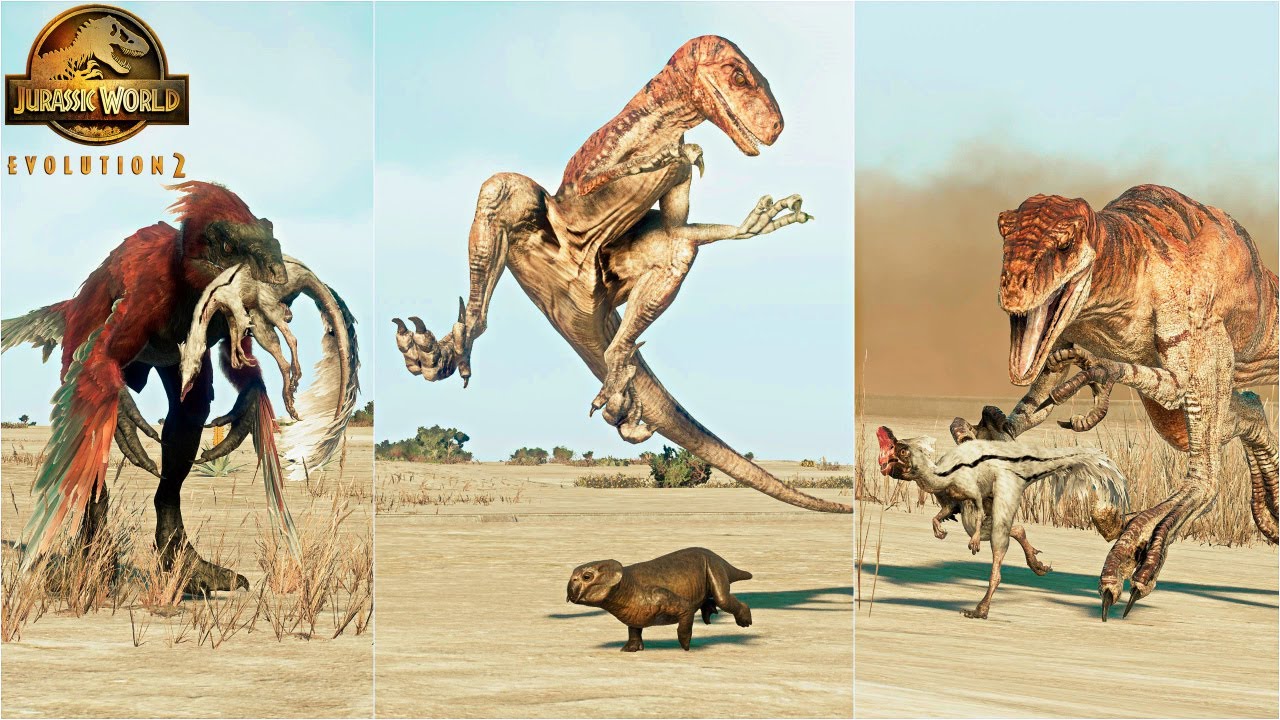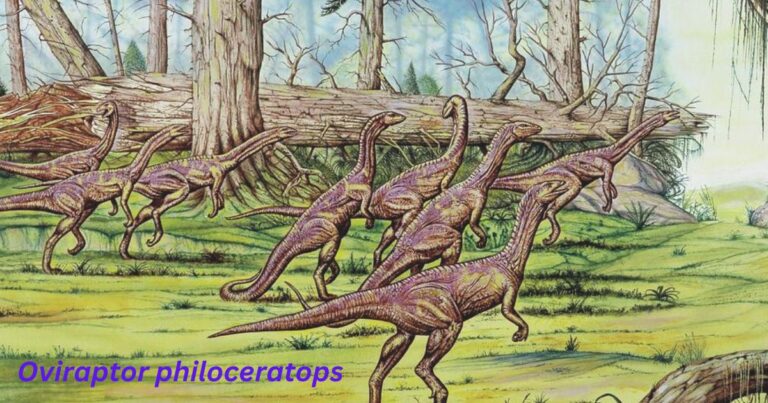
Dinosaurs have always captivated the imagination of people around the world. Among the more intriguing species are the Oviraptor and Citipati, two similar yet distinct members of the Oviraptoridae family from the Late Cretaceous period.
Though often mistaken for each other, these two dinosaurs showcase fascinating differences in appearance, behavior, and fossil discoveries.
In this article, we will explore what sets Oviraptor and Citipati apart and what makes them unique in the dinosaur kingdom.
Quick Overview of Oviraptor and Citipati
Both Oviraptor and Citipati belong to the same oviraptorid family, a group of theropod dinosaurs known for their beak-like mouths and presumed feathered bodies.

This family is closely related to modern birds, and many of its members exhibit bird-like features, such as nesting behavior and a lightweight bone structure.
Key Similarities
- Diet: Both Oviraptor and Citipati were likely omnivores, consuming a varied diet that could have included small animals, eggs, plants, and shellfish.
- Feathered Bodies: Evidence suggests that both species had feathers, as inferred from closely related oviraptorid fossils.
- Nesting Behavior: Fossils indicate that both dinosaurs practiced brooding behavior, similar to modern birds, by laying eggs in nests and potentially caring for their young.
Distinguishing Characteristics of Oviraptor
Oviraptor was first discovered in Mongolia in the 1920s. Known for its characteristic parrot-like beak, the name “Oviraptor” means “egg thief,” a title it received due to the initial misconception that it primarily stole and consumed eggs.
However, subsequent discoveries have suggested that Oviraptor might not have been an egg thief but was instead nurturing its eggs.
- Size and Structure: Oviraptor was relatively small, measuring around 5-6 feet in length and weighing roughly 55-70 pounds.
- Skull and Beak: Oviraptor had a short, robust beak with no teeth, ideal for breaking open hard shells or crushing plant material.
- Crest: It had a small, blunt crest on top of its head, though not as prominent as the crest found on Citipati.
Distinguishing Characteristics of Citipati
Citipati, discovered later than Oviraptor in the 1990s, is another member of the oviraptorid family, though with a few unique features that set it apart.
The name “Citipati” refers to a Buddhist deity symbolizing death and rebirth, inspired by the fossilized remains of Citipati found in what appeared to be a brooding posture over its nest.
- Size and Structure: Citipati was slightly larger than Oviraptor, measuring around 8 feet in length and weighing approximately 80-100 pounds.
- Skull and Beak: Citipati had a longer and narrower beak, which might have enabled it to capture different types of food compared to Oviraptor.
- Crest: The most distinguishing feature of Citipati is its high, fan-shaped crest, which is significantly larger than the small crest of Oviraptor. This crest may have been used for visual display, helping individuals recognize each other or attract mates.
Fossil Discoveries and Insights
The discovery of fossils for both species has contributed significantly to our understanding of dinosaur behavior and morphology:
- Oviraptor Fossils: Initially, the Oviraptor was thought to be an egg thief because its fossils were found near a nest of eggs. It wasn’t until later that scientists realized the eggs could have belonged to the Oviraptor itself, suggesting it may have been brooding rather than preying.
- Citipati Fossils: The discovery of Citipati fossils in a brooding position over a nest of eggs provided the first clear evidence that some dinosaurs practiced parental care similar to modern birds. This positioning supports the theory that Citipati and other oviraptorids might have been warm-blooded, as the act of brooding would have required a warm body to incubate eggs.
Behavioral Insights: Was One More Bird-Like?

Due to their similar body structures and the presence of feathers, both Oviraptor and Citipati demonstrate strong bird-like characteristics.
However, the discoveries of Citipati in a brooding position strongly support the idea that this species might have shown advanced parental behavior, reinforcing a closer behavioral link to modern birds.
- Dietary Adaptations: Both dinosaurs likely used their beak-like mouths to eat a variety of foods. Some paleontologists hypothesize that Citipati’s larger crest might have been involved in social behaviors, perhaps making it more bird-like in terms of visual communication.
- Social Behavior: The larger crest of Citipati could have had a social function, as crests are often used in modern birds for signaling or mating displays. Oviraptor’s smaller crest implies it might have been less dependent on visual displays.
Key Differences Between Oviraptor and Citipati
| Feature | Oviraptor | Citipati |
|---|---|---|
| Size | 5-6 feet long, 55-70 pounds | 8 feet long, 80-100 pounds |
| Beak Structure | Short and robust | Longer and narrower |
| Crest | Small, blunt crest | Large, fan-shaped crest |
| Known Brooding Behavior | Suspected | Proven |
| Fossil Discoveries | Found near eggs (initially thought to be an egg thief) | Discovered in brooding positions over nests |
FAQs
Were Oviraptor and Citipati closely related?
Yes, both belonged to the oviraptorid family and shared many physical and behavioral similarities.
Did both dinosaurs have feathers?
It’s highly likely, as many oviraptorids showed evidence of feathered bodies, supporting their relationship to modern birds.
Why does Citipati have a larger crest than Oviraptor?
Citipati’s larger crest may have been used for social displays, much like crests and colorful feathers in some modern birds.
Why were these dinosaurs mistaken for egg thieves?
Oviraptor was initially thought to be an egg thief because its fossils were found near a nest. It was later discovered that these eggs might have belonged to the Oviraptor itself.
How did Citipati contribute to our understanding of dinosaur parenting?
Citipati fossils were found in brooding positions, showing that some dinosaurs cared for their young, similar to modern birds.
Final Thoughts
Oviraptor and Citipati stand out among dinosaurs for their bird-like features and intriguing parental behaviors. While Oviraptor and Citipati shared a family and a similar diet, the larger, more display-oriented crest of Citipati and its confirmed brooding behavior differentiate it from Oviraptor.
Together, these dinosaurs provide an extraordinary window into the lives of oviraptorids and their evolutionary link to birds.
Understanding these fascinating species helps paleontologists uncover the mysteries of dinosaur behavior, evolution, and the intricate diversity of the ancient world. For more Oviraptors information check the dinorepeat.






